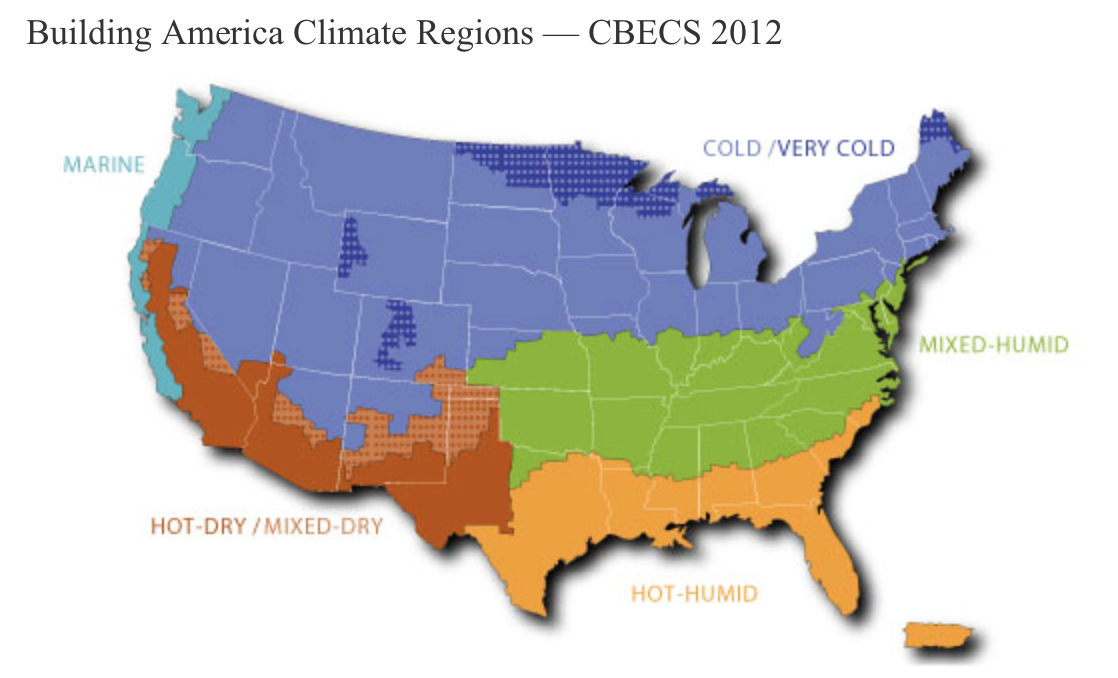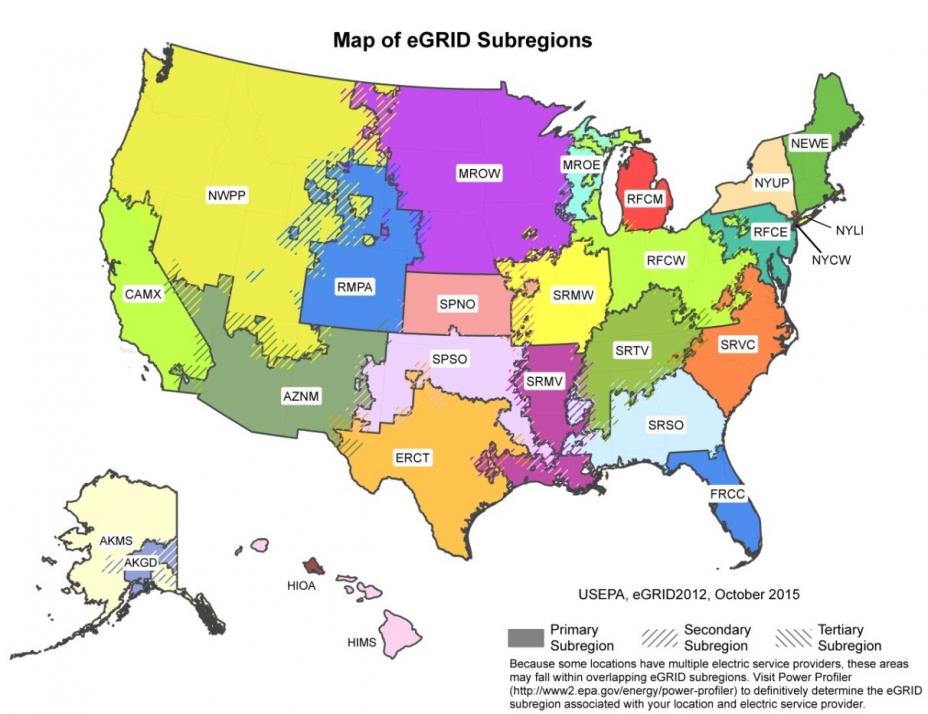** Please note that as of May 1, 2023, this library has been selectively updated. New resources using the 2018 CBECS benchmarks have been added for the emissions factor-EUI combinations actively in use or requested by our customers. If you would like to see a new resource added, please contact your account manager.
The upcoming development of the Scope 5 application will enable the ability to assign multiple conversion factors to one tracker without combining factors together in one resource, as is done in this library. This functionality will enable a broader set of factors and is expected later in 2023.**
Introduction
Scope 5’s CBECS Benchmarking library combines annual energy use intensity (EUI) figures specific to office buildings with greenhouse gas (GHG) emissions factors for electricity and natural gas. This library makes it easy for Scope 5 users to estimate GHG emissions for offices for which they do not have access to electricity or natural gas consumption data.
The resources in this library should be used for facilities located in the United States. For international facilities, please use the Scope 5 International Estimated Electricity Library.
What's Included
Resources in this library are the result of combining an energy use intensity (EUI) benchmark, based on specific CBECS climate regions described below, with an emissions factor set; as such they express energy and emissions per square foot of office area.
Two activities are included in this library:
- Electricity
- Natural Gas
If you have an interest in seeing other Principal Building Activities or reporting activities supported in the Scope 5 CBECS Benchmarking library, please contact us.
Where the Numbers Come From
Benchmarking Figures
The EUI figures in this library come from the Commercial Buildings Energy Consumption Survey (CBECS), a review conducted by the U.S. Energy Information Administration (EIA) to understand building characteristics and define figures for average EUI for different Principal Building Activities. In the words of the EIA, CBECS is the “only nationally representative source of statistical information on energy-related characteristics, consumption, and expenditures for the nation's 5.6 million commercial buildings totaling 87 billion square feet of floor space.”
This library includes data for the Principal Building Activity of Office. Floor space for each building type is measured by evaluating "the gross or total square footage of all the space in this building, both finished and unfinished, including basements, hallways, lobbies, stairways, elevator shafts, and indoor parking levels." This means unconditioned spaces like closets are included in calculating EUI figures, but outdoor patios are not. The degree to which your facility deviates from the ratios of conditioned space used in CBECS calculations will contribute to deviations in the accuracy of an inventory using benchmarks, one way or the other.
Two results of CBECS are of special interest to the Scope 5 community: the national map of climate regions and the detailed tables delineating annual energy use intensity by climate region.
Electricity Resources
The Scope 5 library includes electricity resources for each unique combination of CBECS Climate Region and EPA eGRID Region as illustrated in the maps below:


Disclaimer: The CBECS-eGRID region combinations were created by Scope 5 using the above maps, the eGrid Power Profiler Emissions Tool which offers a lookup by zip code, and the CBECS tables of regions by state and county. Since no official published overlap of the CBECS and eGRID regions exists, we recommend consulting the above maps and tools to confirm each facility’s location and designation.
For each combination, the CBECS region factor for annual electricity EUI (in units of energy/area) is multiplied by the eGRID emissions factor (in units of emissions/energy) to produce conversion factors in emissions per unit area. Note that these emissions factors are expressed as weight per thousands or millions of square feet. The energy conversion factor (energy/area) comes directly from CBECS Table C20.
Natural Gas Resources
The Stationary combustion section of this library has two sections. The first one is based on TCR publications while the second one is based on the EPA publications.
The TCR-based natural gas resources combine the TCR emissions factor for the US weighted average (commercial, by volume) in units of emissions and energy/volume with the annual natural gas EUI for each CBECS region in units of volume/area to produce emissions and energy per unit area.
The EPA-based resources combine natural gas emission factors from the EPA Center for Corporate Climate Leadership - GHG Emission Factors Hub and CBECS energy factors by climate zone.
A Note on Heating Values
For all values by energy - for which the denominator is in mmBtu (or any energy unit) - Scope 5 has chosen to use the Higher Heat Value (HHV), as opposed to the Low Heating Value (LHV), to calculate the emissions factor. In GHG reporting the HHV is the more conservative value as it is always slightly higher or equivalent to the LHV, resulting in a slightly higher (or equivalent) emissions factor than would be calculated by using the LHV.
Global Warming Potentials (GWPs)
Following the Greenhouse Gas Protocol recommendation, all Scope 5 standard resource libraries use global warming potentials from the IPCC's Fifth Assessment Report (AR5) as of February 13, 2017.
Updates
The Scope 5 CBECS library is updated when any of the source authorities publish updates. The library is current through the:
- CBECS December 2022 release for benchmarking figures
- TCR June 2023 release for natural gas
- EPA April 2023 release for natural gas
- eGrid January 2023 release for electricity
Please note that the emission factors released by TCR vary from time to time due to rounding. As such, users may find relatively small variations that are not attributable to actual changes in activity so much as to changes in the rounding of TCR's emission factors on certain years.
Errata
In the 2019 TCR publication, the precision of the Natural gas CO2 Emission Factor (Per Unit Volume) has been increased from one significant digit to four significant digits (0.05 kg CO2/scf to 0.05444 kg CO2/scf). This change in precision has not been reflected by the conversion factors in the CBECS Office Buildings Resource Library.
Disclaimer
Scope 5 cannot guarantee that the use of the Scope 5 CBECS Benchmarking Resource Library will produce a report that is compliant with any particular protocol. We recommend working with a sustainability specialist versed in GHG emissions reporting to ensure the report is fully compliant with the intended use.


Comments